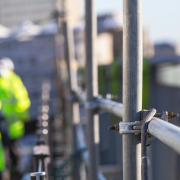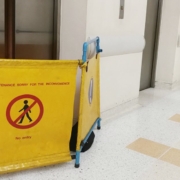Why Is OSHA Training Imperative For Construction Workers

The Occupational & Health Administration (OSHA) was created within the Department of Labor(DOL). OSHA is the Occupational Safety and Health Administration and is responsible for worker safety and health protection.
Since April 28th, 1971 when OSHA was founded, it has reduced workplace fatalities by 66%. Through the standards OSHA set, including training requirements and safety standards, it has saved thousands of lives. According to OSHA, private industry construction workers had a fatality rate that was three times larger than other industries. This makes training for construction workers even more imperative.
OSHA and researchers have identified four specific hazards in the construction industry that cause a large majority of fatal injuries; in fact, OSHA’s Construction Focus For are responsible for nearly 80% of all construction site workplace fatalities. These hazards require employers to ensure that workers are fully trained to prevent injuries and fatalities. The Construction Focus Four are as follows:
- Fall Hazards: The single most deadly hazard in the construction industry, it accounted for 805 deaths in 2003 and 2004 – that’s 34% of all the construction fatalities during that time frame. Falls can occur off roofs, off scaffolding, through holes or on working surfaces.
- Caught In or Between Hazards: Caught-in or between hazards accounted for 10% of all fatalities in the construction industry in 2003 and 2004. Caught-in or between injuries are when an employee is squeezed, caught, crushed, compressed, or pinched between parts of an object or several objects.
- Struck-by Hazards: The category encompasses all hazards resulting in objects that move, fall or roll and strike a worker. it also includes instances when unsecured loads or flying objects hit workers. Particularly dangerous for those working around traffic or with heavy equipment, struck-by consisted of 24% of workplace fatalities in 2003 and 2004.
- Electrocution Hazards: Accounting for 11% of workplace fatalities in 2003 and 2004, electrical hazards are considered one of construction’s deadly four workplace hazards. Training relating to electrocution focuses on de-energizing circuits and then ensuring that no charge remains.
All OSHA-authorized outreach training courses for Construction are required to cover these hazards in depth. Outreach training, along with specific on-site instruction by the employer, will help employers meet many of the required training provisions under OSHA standards. To help workers who need OSHA training to meet these training OSHA training requirements, OSHA created the Outreach Training Program, which was developed to promote workplace safety and health by providing access to training by OSHA authorized trainers.
Outreach training results in the issuance of an official DOL OSHA card, also known as an OSHA 10 or OSHA 30 card. Many workers carry these cards with them on the worksite, and in some cases, there are workers who need to carry their 10-hour or 30-hour OSHA card with them at all times as mandated by their state.
OSHA Outreach 10-hour and 30-hour training courses are a fantastic way to create a solid baseline of standards training, and these courses help employers to meet these important training requirements in an efficient and controlled method. Many construction companies consider Outreach training an essential part of their safety program.












Leave a Reply
Want to join the discussion?Feel free to contribute!